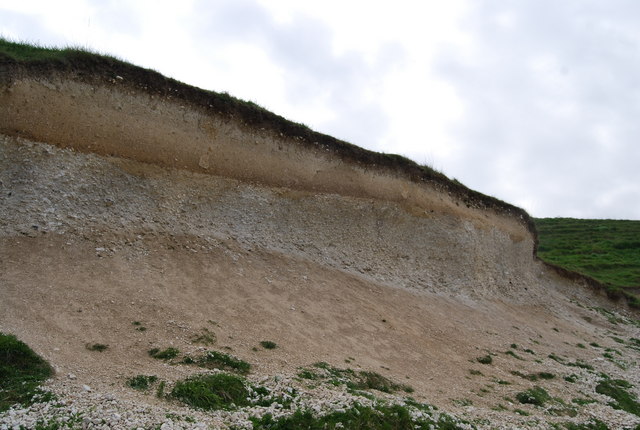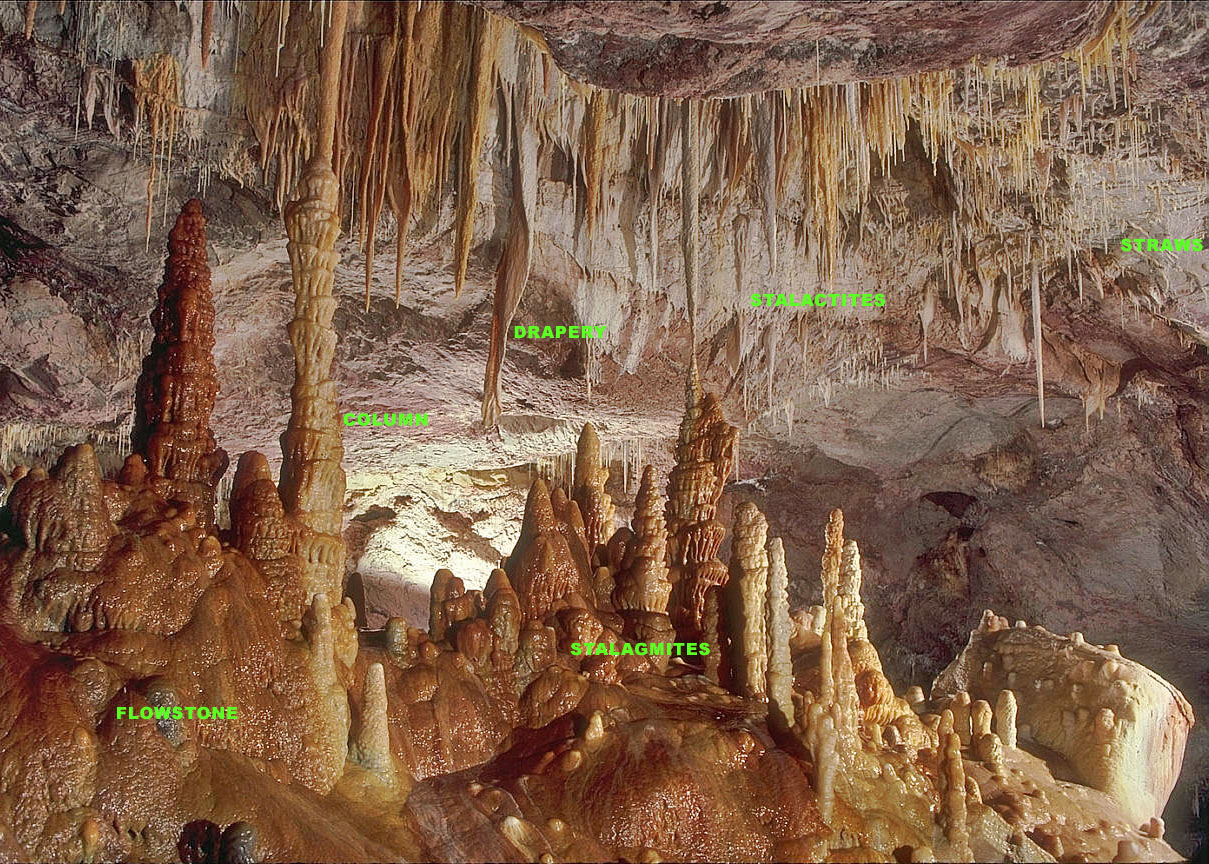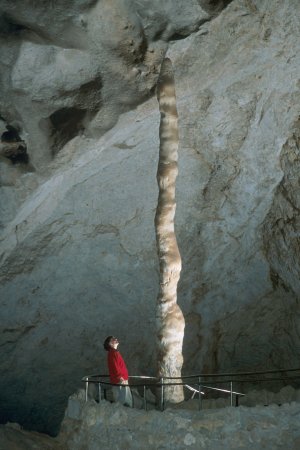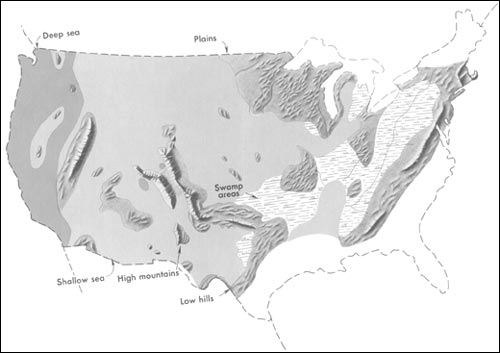|
Richards Spur
Richards Spur is a Permian fossil locality located at the Dolese Brothers Limestone Quarry north of Lawton, Oklahoma. The locality preserves clay and mudstone fissure fills of a karst system eroded out of Ordovician limestone and dolomite, with the infilling dating to the Artinskian stage of the early Permian (Cisuralian), around 289 to 286 million years ago. Fossils of terrestrial animals are abundant and well-preserved, representing one of the most diverse Paleozoic tetrapod communities known. A common historical name for the site is Fort Sill, in reference to the nearby military base. Fossils were first reported at the quarry by workers in 1932, spurring a wave of collecting by local and international geologists. Early taxa of interest included the abundant reptile '' Captorhinus'' and microsaurs such as '' Cardiocephalus'' and '' Euryodus''. Later notable discoveries include '' Doleserpeton'' (one of the most lissamphibian-like Paleozoic tetrapods), the most diverse assortmen ... [...More Info...] [...Related Items...] OR: [Wikipedia] [Google] [Baidu] |
Captorhinus Aguti P
''Captorhinus'' (from el, καπτō , 'to gulp down' and el, ῥῑνός , 'nose') is an extinct genus of captorhinid reptiles that lived during the Permian period. Its remains are known from Oklahoma, Texas, Europe, India, the Pedra de Fogo Formation, Parnaíba Basin, Brazil and the Madumabisa Mudstone, Zambia. Description While there are several forms of ''Captorhinus'', there are three main species that are the best known. The previously mentioned ''Captorhinus aguti'' is the type species of ''Captorhinus'', but there is also a fair amount of material collected on ''Captorhinus magnus'' and ''Captorhinus laticeps''. The most distinguishable trait of ''Captorhinus'' is its namesake: the hooking of the snout from prominent ventral angulation of the premaxillary process. Other notable characteristics include the dorsally positioned alary process of the jugal on the medial surface and flushed with the orbital margin, the retroarticular process longer anteroposteriorly ... [...More Info...] [...Related Items...] OR: [Wikipedia] [Google] [Baidu] |
Parareptilia
Parareptilia ("at the side of reptiles") is a subclass or clade of basal sauropsids ( reptiles), typically considered the sister taxon to Eureptilia (the group that likely contains all living reptiles and birds). Parareptiles first arose near the end of the Carboniferous period and achieved their highest diversity during the Permian period. Several ecological innovations were first accomplished by parareptiles among reptiles. These include the first reptiles to return to marine ecosystems (mesosaurs), the first bipedal reptiles (bolosaurids such as ''Eudibamus''), the first reptiles with advanced hearing systems ( nycteroleterids and others), and the first large herbivorous reptiles (the pareiasaurs). The only parareptiles to survive into the Triassic period were the procolophonoids, a group of small generalists, omnivores, and herbivores. The largest family of procolophonoids, the procolophonids, rediversified in the Triassic, but subsequently declined and became extinct ... [...More Info...] [...Related Items...] OR: [Wikipedia] [Google] [Baidu] |
Mudrock
Mudrocks are a class of fine-grained siliciclastic sedimentary rocks. The varying types of mudrocks include siltstone, claystone, mudstone, slate, and shale. Most of the particles of which the stone is composed are less than and are too small to study readily in the field. At first sight, the rock types appear quite similar; however, there are important differences in composition and nomenclature. There has been a great deal of disagreement involving the classification of mudrocks. A few important hurdles to their classification include the following: # Mudrocks are the least understood and among the most understudied sedimentary rocks to date. # Studying mudrock constituents is difficult due to their diminutive size and susceptibility to weathering on outcrops. # And most importantly, scientists accept more than one classification scheme. Mudrocks make up 50% of the sedimentary rocks in the geologic record and are easily the most widespread deposits on Earth. Fine sedime ... [...More Info...] [...Related Items...] OR: [Wikipedia] [Google] [Baidu] |
Calcareous
Calcareous () is an adjective meaning "mostly or partly composed of calcium carbonate", in other words, containing lime or being chalky. The term is used in a wide variety of scientific disciplines. In zoology ''Calcareous'' is used as an adjectival term applied to anatomical structures which are made primarily of calcium carbonate, in animals such as gastropods, i.e., snails, specifically about such structures as the operculum, the clausilium, and the love dart. The term also applies to the calcium carbonate tests of often more or less microscopic Foraminifera. Not all tests are calcareous; diatoms and radiolaria have siliceous tests. The molluscs are calcareous, as are calcareous sponges (Porifera), that have spicules which are made of calcium carbonate. In botany ''Calcareous grassland'' is a form of grassland characteristic of soils containing much calcium carbonate from underlying chalk or limestone rock. In medicine The term is used in pathology, for ... [...More Info...] [...Related Items...] OR: [Wikipedia] [Google] [Baidu] |
Delorhynchus Cifellii Skulls
''Delorhynchus'' is an extinct genus of lanthanosuchoid parareptile known from the late Early Permian (Artinskian age) Garber Formation of Comanche County, Oklahoma. It contains three species: the type species ''D. priscus'' is based on a series of maxillae. The second species to be described, ''D. cifellii'', is known from a larger number of well-preserved skulls and skeletal material. The third species, ''D. multidentatus'', is based on a fragmentary skull with several rows of teeth on its jaw. Discovery The type species, ''D. priscus,'' was first described and named by Richard C. Fox in 1962. The generic name "''Delorhynchus''" is derived from Greek ''rhynchos''/''ρυγχος'', meaning "beak" (a common suffix for extinct reptile genera names). The specific name of the type species ''D. priscus'' is derived from Greek ''πρίσκος'', meaning "ancient" or "venerable" in reference to the fragmentary nature of the known remains. ''D. priscus'' is known from the holotype ... [...More Info...] [...Related Items...] OR: [Wikipedia] [Google] [Baidu] |
Calcite
Calcite is a carbonate mineral and the most stable polymorph of calcium carbonate (CaCO3). It is a very common mineral, particularly as a component of limestone. Calcite defines hardness 3 on the Mohs scale of mineral hardness, based on scratch hardness comparison. Large calcite crystals are used in optical equipment, and limestone composed mostly of calcite has numerous uses. Other polymorphs of calcium carbonate are the minerals aragonite and vaterite. Aragonite will change to calcite over timescales of days or less at temperatures exceeding 300 °C, and vaterite is even less stable. Etymology Calcite is derived from the German ''Calcit'', a term from the 19th century that came from the Latin word for lime, ''calx'' (genitive calcis) with the suffix "-ite" used to name minerals. It is thus etymologically related to chalk. When applied by archaeologists and stone trade professionals, the term alabaster is used not just as in geology and mineralogy, where it is ... [...More Info...] [...Related Items...] OR: [Wikipedia] [Google] [Baidu] |
Cave Popcorn
Cave popcorn, or coralloids, are small nodes of calcite, aragonite or gypsum that form on surfaces in caves, especially limestone caves. They are a common type of speleothem. Appearance The individual nodules of cave popcorn range in size from 5 to 20 mm and may be decorated by other speleothems, especially aragonite needles or frostwork. The nodules tend to grow in clusters on bedrock or the sides of other speleothems. These clusters may terminate suddenly in either an upward or downward direction, forming a stratographic layer. When they terminate in a downward direction, they may appear as flat bottomed formations known as trays. Individual nodes of popcorn can assume a variety of shapes from round to flattened ear or button like shapes. The color of cave popcorn is usually white, but various other colors are possible depending on the composition. Formation Cave popcorn can form by precipitation. Water seeping through limestone walls or splashing onto them leaves depo ... [...More Info...] [...Related Items...] OR: [Wikipedia] [Google] [Baidu] |
Stalactite
A stalactite (, ; from the Greek 'stalaktos' ('dripping') via ''stalassein'' ('to drip') is a mineral formation that hangs from the ceiling of caves, hot springs, or man-made structures such as bridges and mines. Any material that is soluble and that can be deposited as a colloid, or is in suspension, or is capable of being melted, may form a stalactite. Stalactites may be composed of lava, minerals, mud, peat, pitch, sand, sinter, and amberat (crystallized urine of pack rats). A stalactite is not necessarily a speleothem, though speleothems are the most common form of stalactite because of the abundance of limestone caves. The corresponding formation on the floor of the cave is known as a stalagmite. Mnemonics have been developed for which word refers to which type of formation; one is that ''stalactite'' has a C for "ceiling", and ''stalagmite'' has a G for "ground". Another example is that ''stalactites'' "hang on ''T''ight" and ''stalagmites'' "''M''ight grow up" � ... [...More Info...] [...Related Items...] OR: [Wikipedia] [Google] [Baidu] |
Stalagmite
A stalagmite (, ; from the Greek , from , "dropping, trickling") is a type of rock formation that rises from the floor of a cave due to the accumulation of material deposited on the floor from ceiling drippings. Stalagmites are typically composed of calcium carbonate, but may consist of lava, mud, peat, pitch, sand, sinter, and amberat (crystallized urine of pack rats). The corresponding formation hanging down from the ceiling of a cave is a stalactite. Mnemonics have been developed for which word refers to which type of formation; one is that ''stalactite'' has a C for "ceiling", and ''stalagmite'' has a G for "ground", another is that, as with ants in the pants, the mites go up and the tights (tites) come down. Formation and type Limestone stalagmites The most common stalagmites are speleothems, which usually form in limestone caves. Stalagmite formation occurs only under certain pH conditions within the cavern. They form through deposition of calcium carb ... [...More Info...] [...Related Items...] OR: [Wikipedia] [Google] [Baidu] |
Speleothem
A speleothem (; ) is a geological formation by mineral deposits that accumulate over time in natural caves. Speleothems most commonly form in calcareous caves due to carbonate dissolution reactions. They can take a variety of forms, depending on their depositional history and environment. Their chemical composition, gradual growth, and preservation in caves make them useful paleoclimatic proxies. Chemical and physical characteristics More than 300 variations of cave mineral deposits have been identified. The vast majority of speleothems are calcareous, composed of calcium carbonate (CaCO3) minerals ( calcite or aragonite). Less commonly, speleothems are made of calcium sulfate (gypsum or mirabilite) or opal. Speleothems of pure calcium carbonate or calcium sulfate are translucent and colorless. The presence of iron oxide or copper provides a reddish brown color. The presence of manganese oxide can create darker colors such as black or dark brown. Speleothems can also be br ... [...More Info...] [...Related Items...] OR: [Wikipedia] [Google] [Baidu] |
Pennsylvanian (geology)
The Pennsylvanian ( , also known as Upper Carboniferous or Late Carboniferous) is, in the ICS geologic timescale, the younger of two subperiods (or upper of two subsystems) of the Carboniferous Period. It lasted from roughly . As with most other geochronologic units, the rock beds that define the Pennsylvanian are well identified, but the exact date of the start and end are uncertain by a few hundred thousand years. The Pennsylvanian is named after the U.S. state of Pennsylvania, where the coal-productive beds of this age are widespread. The division between Pennsylvanian and Mississippian comes from North American stratigraphy. In North America, where the early Carboniferous beds are primarily marine limestones, the Pennsylvanian was in the past treated as a full-fledged geologic period between the Mississippian and the Permian. In parts of Europe, the Mississippian and Pennsylvanian are one more-or-less continuous sequence of lowland continental deposits and are grouped ... [...More Info...] [...Related Items...] OR: [Wikipedia] [Google] [Baidu] |
Arbuckle Group
The Arbuckle Group is a geologic group in Oklahoma. It preserves fossils dating back to the Ordovician period. See also * Arbuckle Mountains * List of fossiliferous stratigraphic units in Oklahoma * Paleontology in Oklahoma * Oklahoma earthquake swarms (2009–present) The Oklahoma earthquake swarms are an ongoing series of human activity-induced earthquakes affecting central Oklahoma, southern Kansas, northern Texas since 2009. Beginning in 2009, the frequency of earthquakes in the U.S. state of Oklahoma rap ... References * Ordovician System of North America Geologic groups of Oklahoma {{Ordovician-stub ... [...More Info...] [...Related Items...] OR: [Wikipedia] [Google] [Baidu] |









